Apple tree Bryansk pink: description and recommendations for growing
There are different species in the gardens apple trees... Someone prefers summer varieties of fruit trees, which are harvested in August. Apples are not suitable for long storage. But many people love apple trees, which produce juicy, fragrant fruits that can be enjoyed all winter long.
One of the most common late varieties of apple trees, included in the top three, is the hybrid Bryansk pink. It was appreciated by gardeners in regions with extreme environmental conditions. No wonder the apple tree is included in the State Register for the Central Regions of Russia. In order to achieve high-quality fruits from a tree, high yields, you need to competently engage in agricultural agricultural technology.
Content:
- Description and benefits of the variety
- Terms and rules for planting a seedling
- Wood care tips
- Pruning and preparing an apple tree for winter
- Disease and pest control
Description and benefits of the variety
A medium-sized apple tree of the Bryansk selection grows quickly, releasing shoots of medium thickness. The branches extend at right angles from the trunk of the tree. On brownish shoots there are large, rounded leaves, wavy along the edge and slightly wrinkled. Fruits are formed on short branches - ringlets. Fruiting on them occurs up to six to eight years, and begins in the second year of the apple tree's life. Apples do not fall off the tree when ripe.
The fruits of the late variety are large, weighing up to 200 grams, rarely - 300.
Juicy white flesh is hidden under a thin, smooth pink skin. Apples of medium density, dessert taste, sweet with a slight sourness, aromatic. The fruits contain up to 9 percent sugars and half a percent of acids. 100 grams of product contains 10 milligrams of ascorbic acid.
The advantages of the Bryansk pink apple tree include:
- The tree bears fruit regularly.
- Fruits are distinguished by excellent presentation, sweet taste.
- Apples are stored until February.
- The variety is self-fertile.
- The tree sustainably tolerates environmental disasters, retains immunity to scab.
- The culture is one of the most winter-hardy.
If you treat the cultivation of an apple tree correctly, then the keeping quality of the fruits will increase, and the terms of their consumption will lengthen.
Terms and rules for planting a seedling
In order for fruit trees to take root in the garden and to delight with crops for a long time, it is necessary to choose places for them:
- flat, in the north-east, north-west of the territory
- with nutrient soil of neutral acidity
- well lit
- where groundwater occurs at a depth of 2 meters from the surface
- sheltered from the wind
The soil is plowed before planting apple trees to a depth of 30 centimeters. For digging or plowing, manure is applied per square meter - 5 kilograms. From mineral fertilizers take phosphate, potash fertilizers from 50 to 20 grams. The site requires harrowing and cultivation. Planting pits are prepared for the apple variety in advance, a month or two. Their depth is 70 centimeters and a width of one meter.
The best time to plant apple trees will be early spring, when the buds have not yet blossomed. In autumn they are planted until October 10. 2 buckets of humus, 200 grams of superphosphate and 50 grams of potassium salt are introduced into the pits. All components must be mixed with earth.When the pit is filled by a third, then another bucket of humus is poured, mixed with the soil. Annual seedlings are placed in the mound obtained at the bottom.
When planting, it is important that the root collar is at the level of the soil, and the roots are straightened.
After installing the seedling, add earth to the hole, carefully tamp the top layer and make a hole around it. Three buckets of water are poured into it. When the liquid is absorbed, then a layer of mulch of 10 centimeters is poured around. You can spud the trunk of a tree with sawdust to a height of 20 centimeters.
Mulching will keep the seedling from frost during autumn planting, and in the spring - will protect it from the appearance of weeds, lack of moisture. The distance between the apple trees is 50 centimeters. In the first year, they take empty places for tomatoes, cucumbers, onions.
Wood care tips
Caring for an apple tree consists in the correct soil content, on which the fruiting of the garden depends:
- In the first year, mulch is kept on the area of the trunk circle, manure and humus are used as it.
- In a rainy summer in August, the layer is carefully dug up, trying not to damage the roots of the tree. Near the trunk, the depth of digging is 5-8 centimeters, at the edge of the trunk circle - up to 18.
- In the fall, fertilizers are applied, consisting of 2 kilograms of humus, 25 grams of superphosphate, 12 - potassium salt. The fertilizer rate depends on the fertility of the soil. It is better to use liquid feed. After flowering, 10 grams of ammonium nitrate and 5 grams of potassium salt are taken on a bucket of water. To lay fruit buds, it is also necessary to add mineral complexes with phosphorus and potassium in July.
- Apple trees are watered five to six times over the summer in the first year, and then enough - 4 times. The soil is soaked to a depth of 50 centimeters, so one tree needs up to 5-7 buckets of water.
- Siderates are sown in the aisles, which are mowed in August, spreading around the trunk of the apple tree.
Taking care of apple trees is easy. If you want to achieve fruits in large quantities and regularly, then you should follow the rules of care in full.
Pruning and preparing an apple tree for winter
The formation of the crown by pruning plays an important role in creating a powerful and durable skeleton of a tree. In the spring, the procedure is carried out before bud break, when the air temperature is set at minus 5 degrees. To form the crown, weak shoots are removed, leaving four non-intersecting shoots. Then a third of the length is removed from annual branches. Achieving a round crown, cut the shoots of the first order by one third, and the second order - less. If the growth reaches 30 centimeters, then pruning is not needed. Every year, weak branches are removed, thickening the shoots. Thin the crown annually, achieve the transformation of growth shoots into fruiting ones.
In the fall, before wintering, close up in the trunk circle mineral and organic fertilizers... They dig up the earth, and apply a layer of mulch from compost... Apple tree trunks are whitewashed to protect from the sun's rays in winter. Although the variety Bryanskoe pink is winter-hardy, it tolerates low temperatures well, but young trees can be wrapped in layers of non-woven material.
A strong tree will easily survive the winter if it is prepared for it on time.
For pests of apple trees, traps are prepared: they wrap the trunks with burlap, coating it with glue inside. It is prepared from castor oil and crushed rosin. The components are boiled until thick, stirring constantly. You can smear the composition with a stem of dead bark 1 millimeter thick with a width of 10 centimeters. To save from rodents and hares, the apple tree is wrapped around the trunks with roofing paper, sealing the ends of the material deep into the ground. In winter, they trample the snow around the apple trees so that there are no passages for the mice. They set traps for hares.
It is important to protect horticultural crops from early spring frosts. For this, smoke heaps are installed, which are set on fire in turn. They are prepared from dry grass and manure superimposed on top. Watering and spraying apple trees with water will save you from the effects of cold.
Disease and pest control
The apple variety Bryanskoe pink is resistant to scab, but other infections can infect it:
- Powdery mildew determined by a bloom of white on the leaves. Over time, spreading, the disease leads to drying of the leaves. In the early stages of the disease, diseased trees are sprayed with preparations containing sulfur.
- Fungal rot often affects the fruit of the apple tree. First, the fruits are covered with brown circles, then white stripes appear around. The apples fall to the ground and rot. For treatment and prevention, they are treated with a solution bordeaux liquid.
Apple trees love pests:
- On it the caterpillars of the hawthorn butterfly settle, which feed on the leaves of the tree. In the spring, for prophylaxis, trees should be sprayed with Karbofos or Phosphamide.
- In autumn, a female winter moth lays eggs on trees, and in spring voracious caterpillars appear. Treat the garden three times insecticidesto get rid of the parasite. In the fall, they dig up a site around the apple trees to destroy the moth pupae.
- The apple moth also harms in the caterpillar stage. Eating apples, she damages them, the fruits fall to the ground unripe. Apple trees should be sprayed with insecticides from June 15 every ten days twice.
- Caterpillars of the gypsy moth, butterflies of yellowish-white color, are very harmful to the apple tree. In the middle of summer, a butterfly lays up to a thousand eggs on tree trunks. To destroy the parasite, the eggs are scraped off or coated with a mixture of kerosene and tar. Fishing belts applied to the apple tree trunks will protect against caterpillars.
- The apple tree feeds on plant sap aphid and mite... These insects can be destroyed with Karbofos solutions or tobacco infusion with laundry soap.
Diseases and pests are affected by the apple variety if the garden is not properly maintained.
More information can be found in the video:



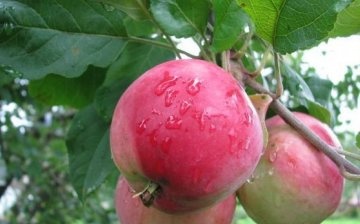
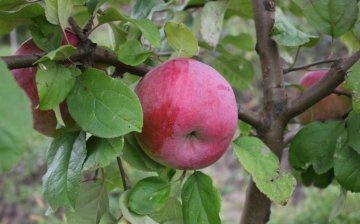
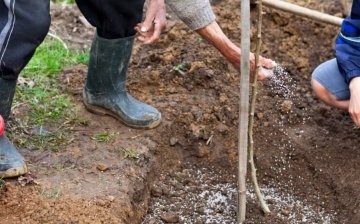
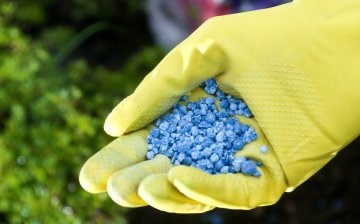

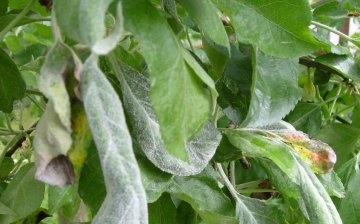






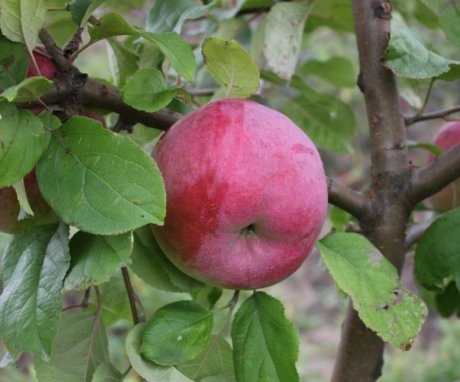
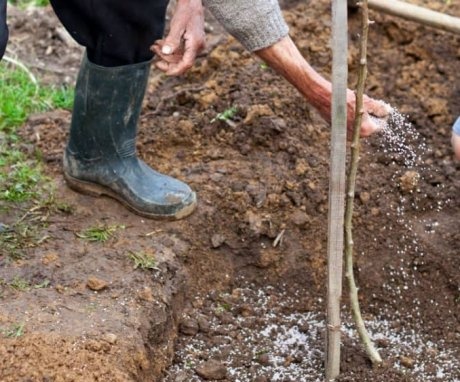


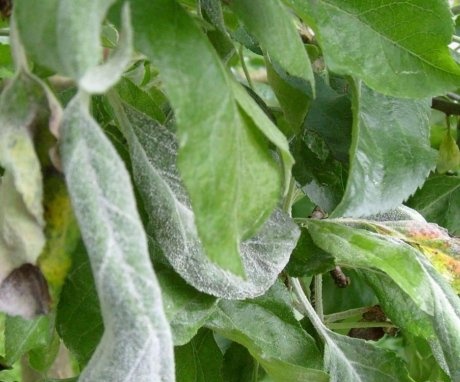
The main thing when growing this variety of apple trees is proper pruning, regular fertilization, spraying the apple tree from various pests and diseases. In addition, you need to strive not to prune horizontal branches, because, in general, large apples grow on them.